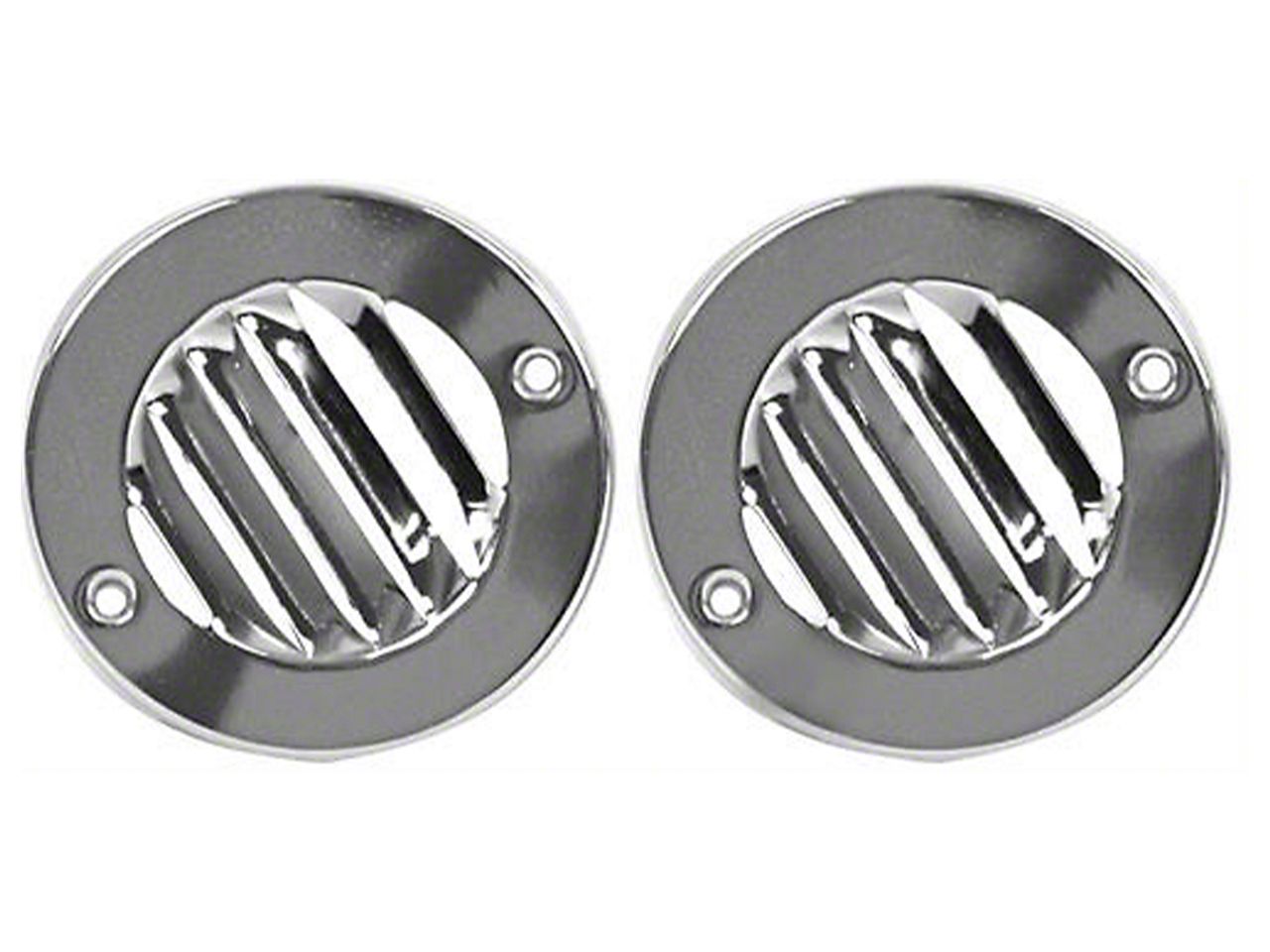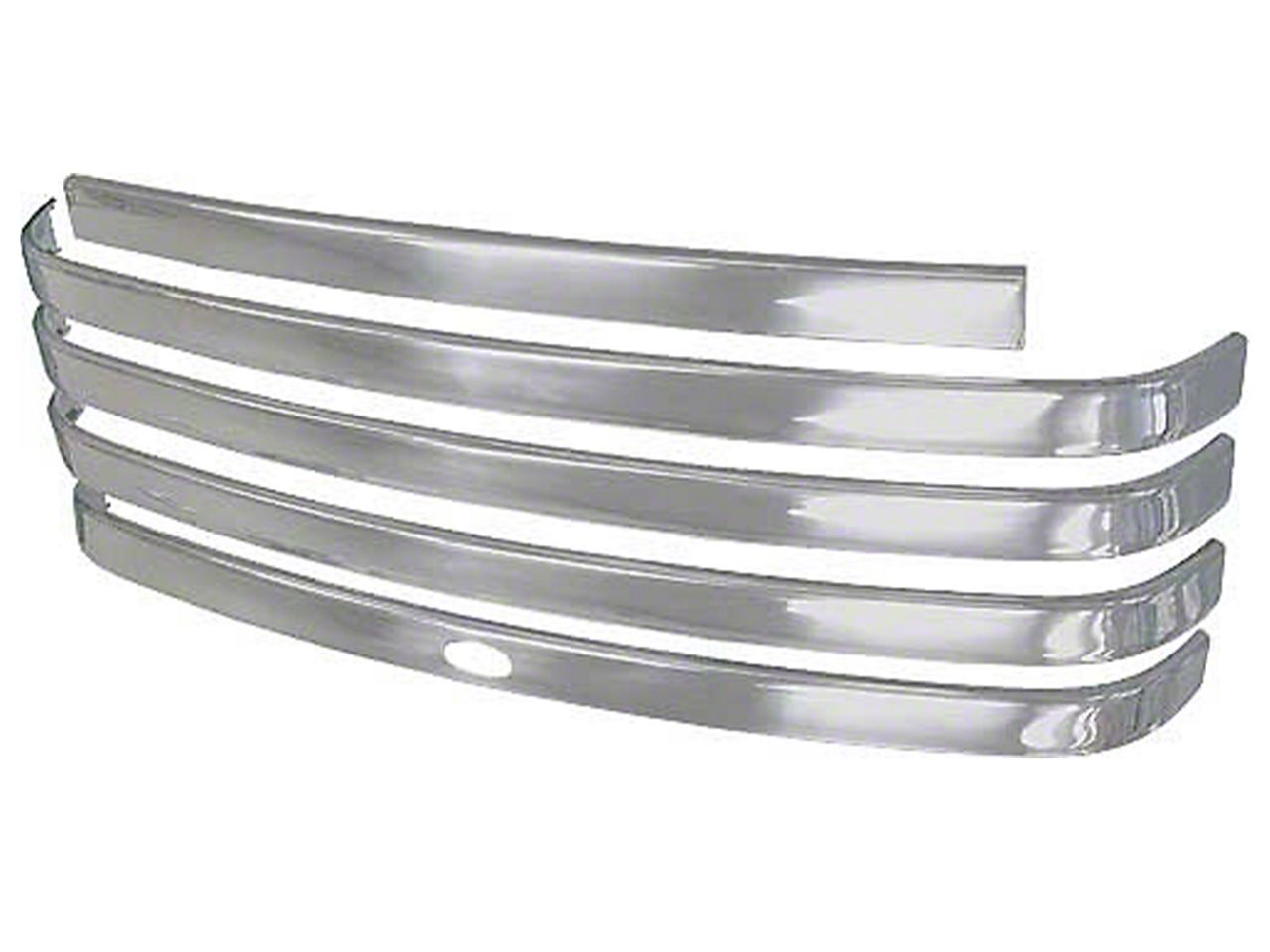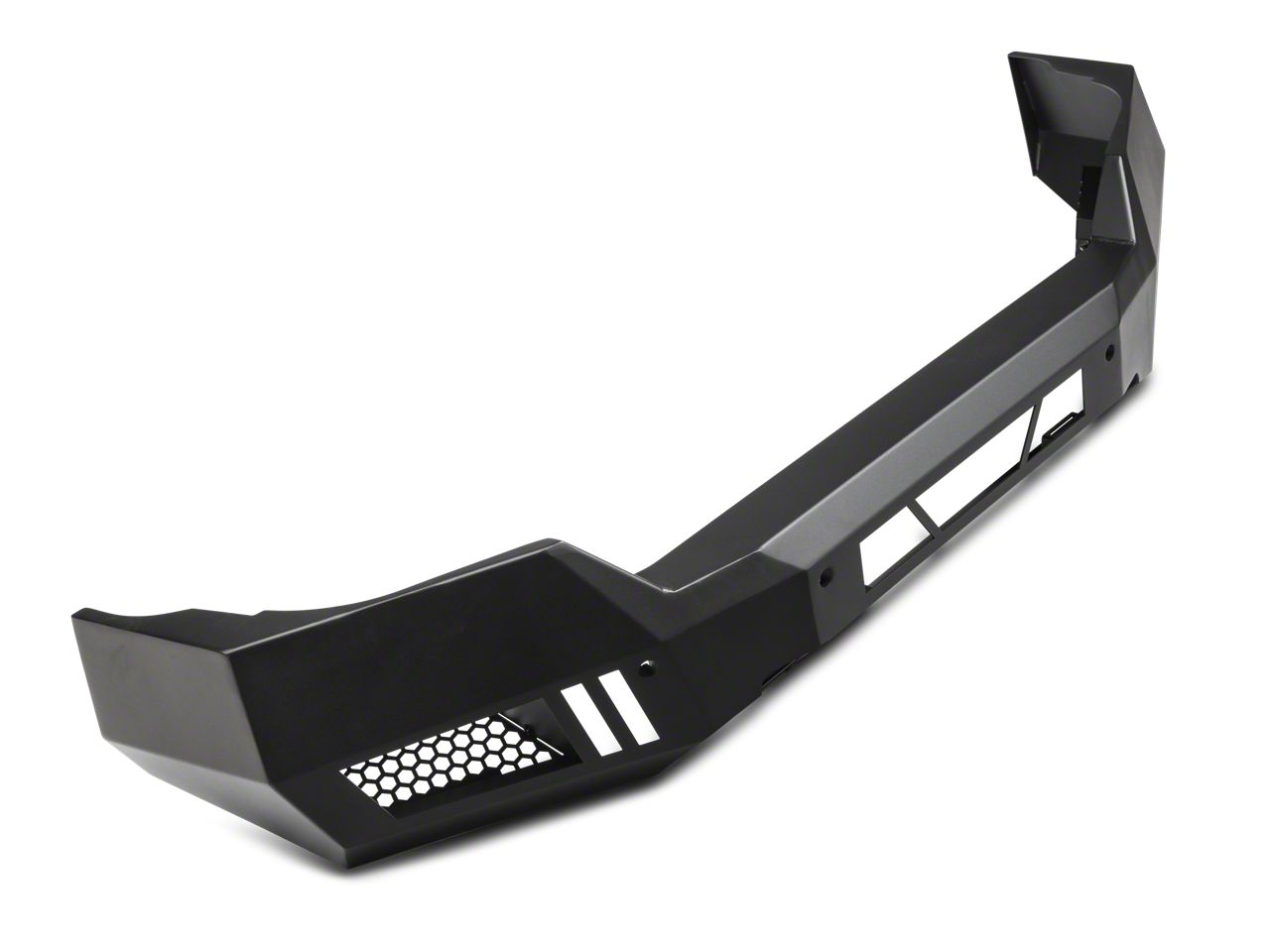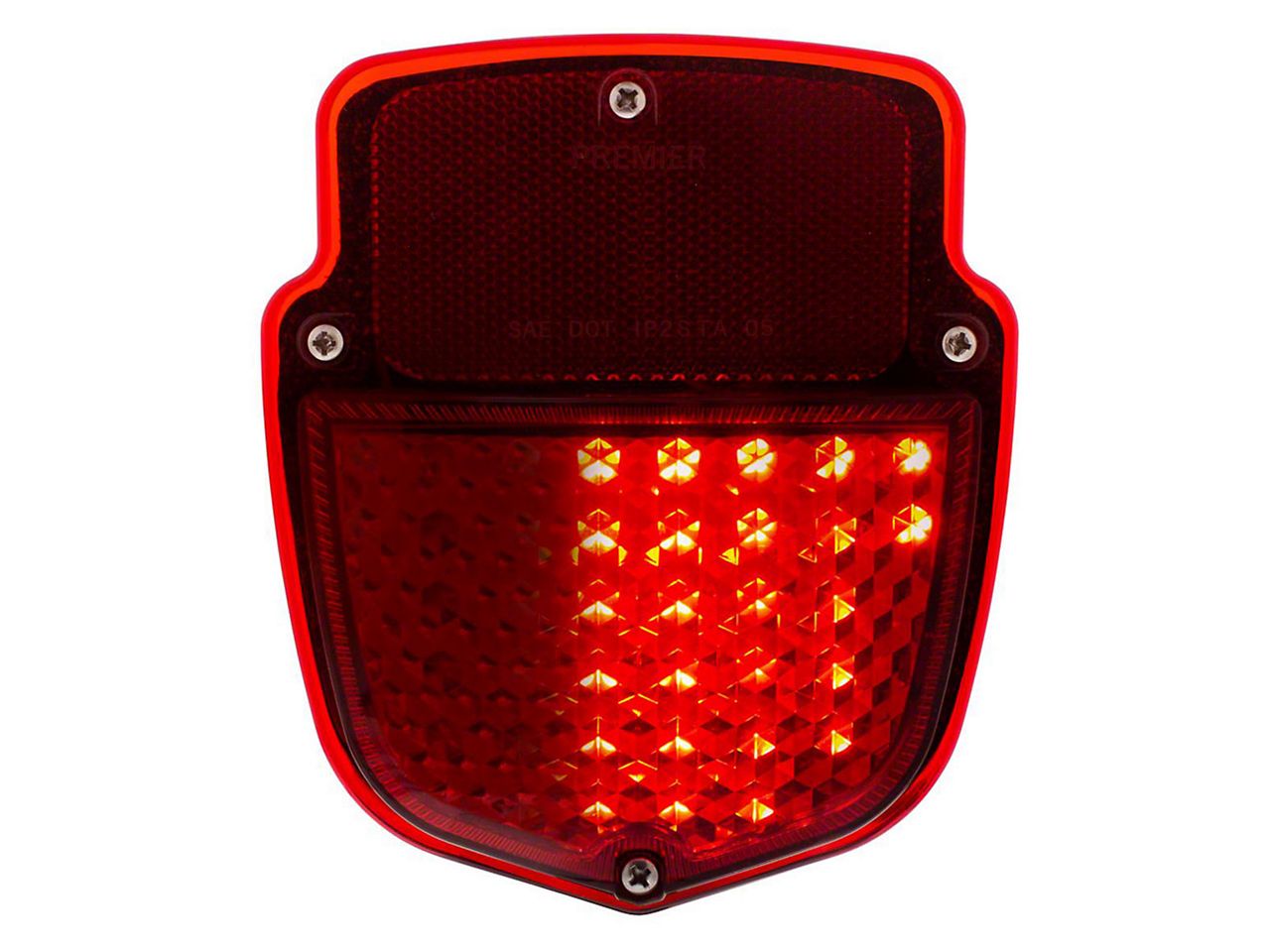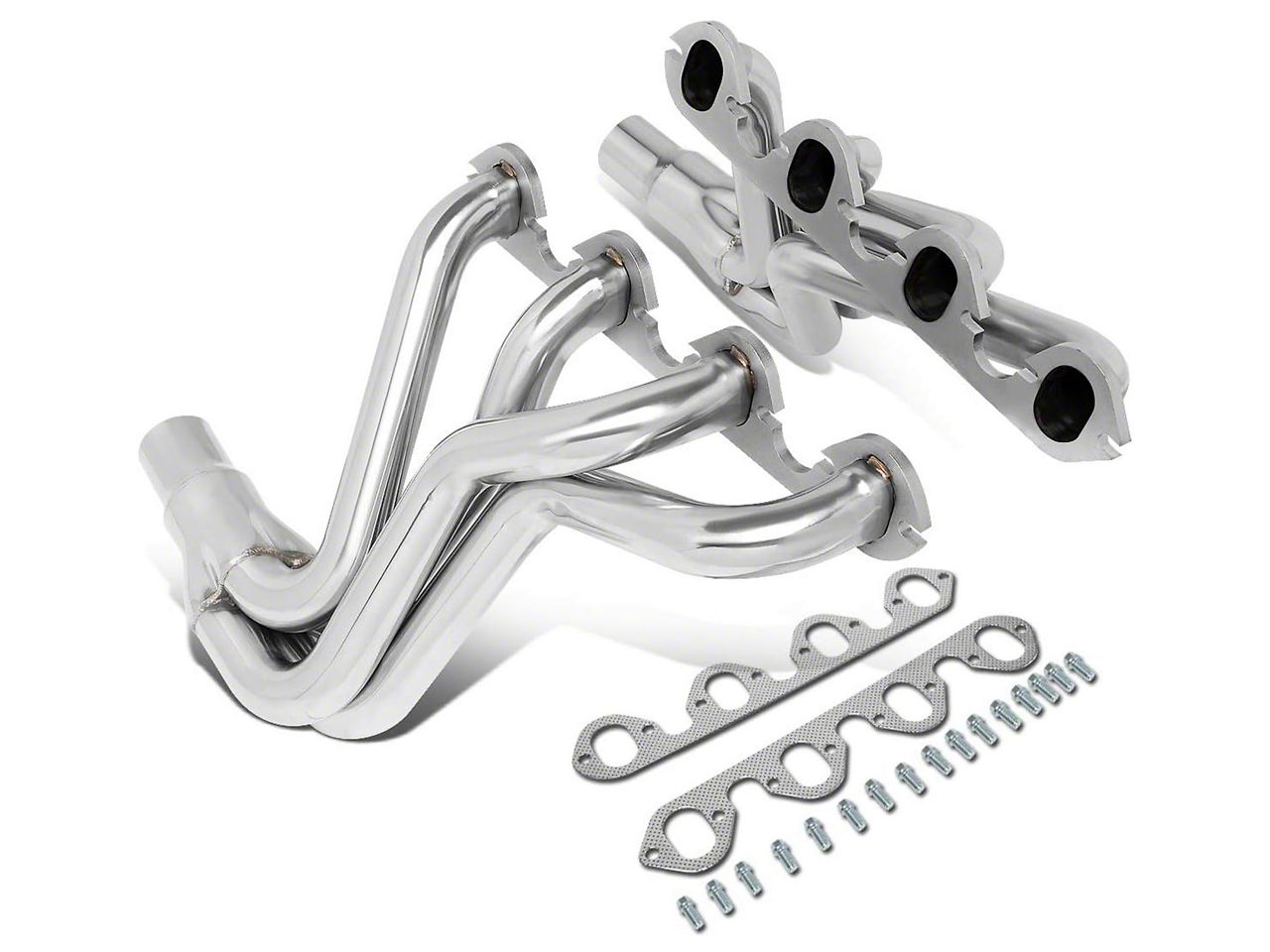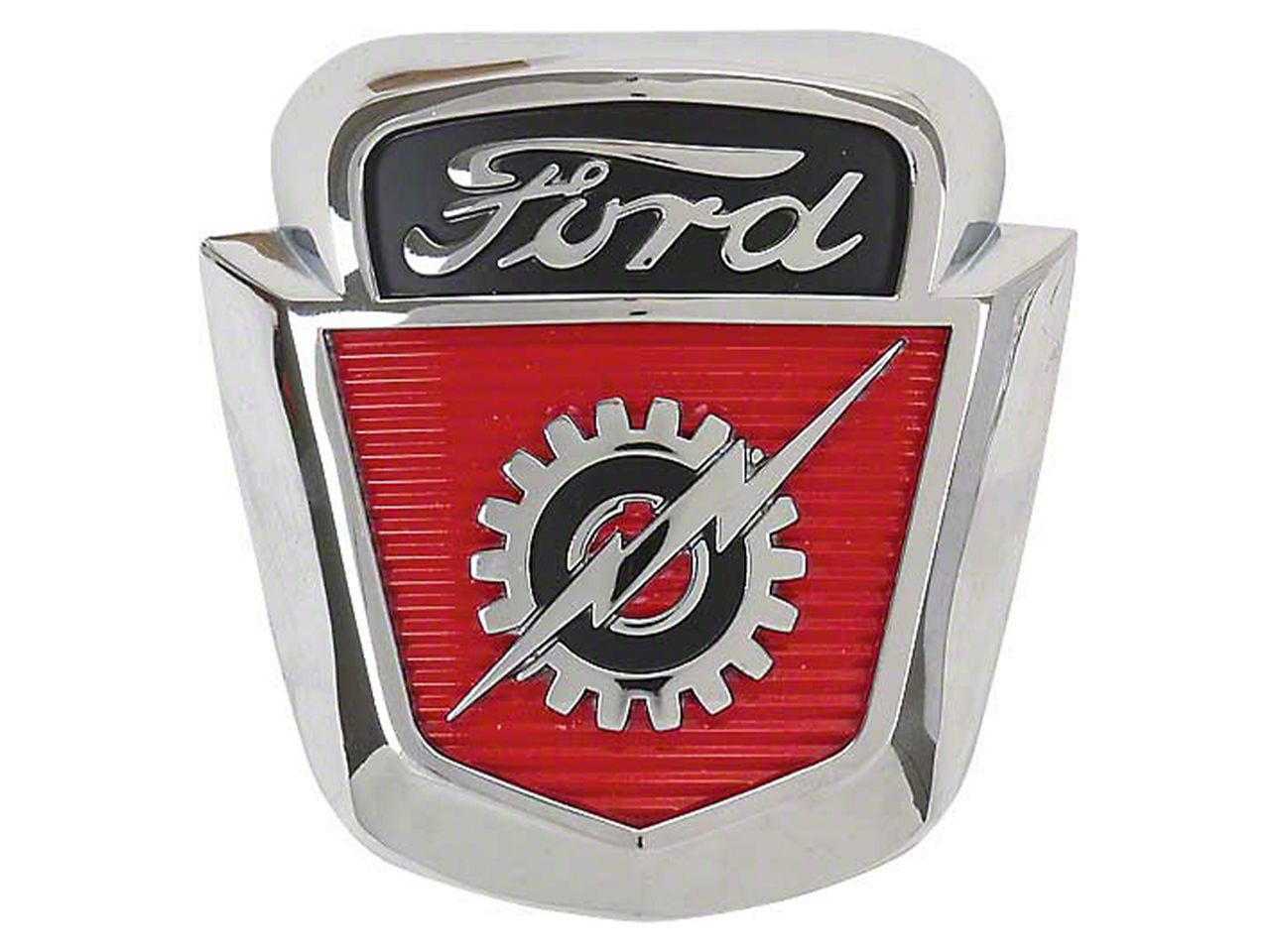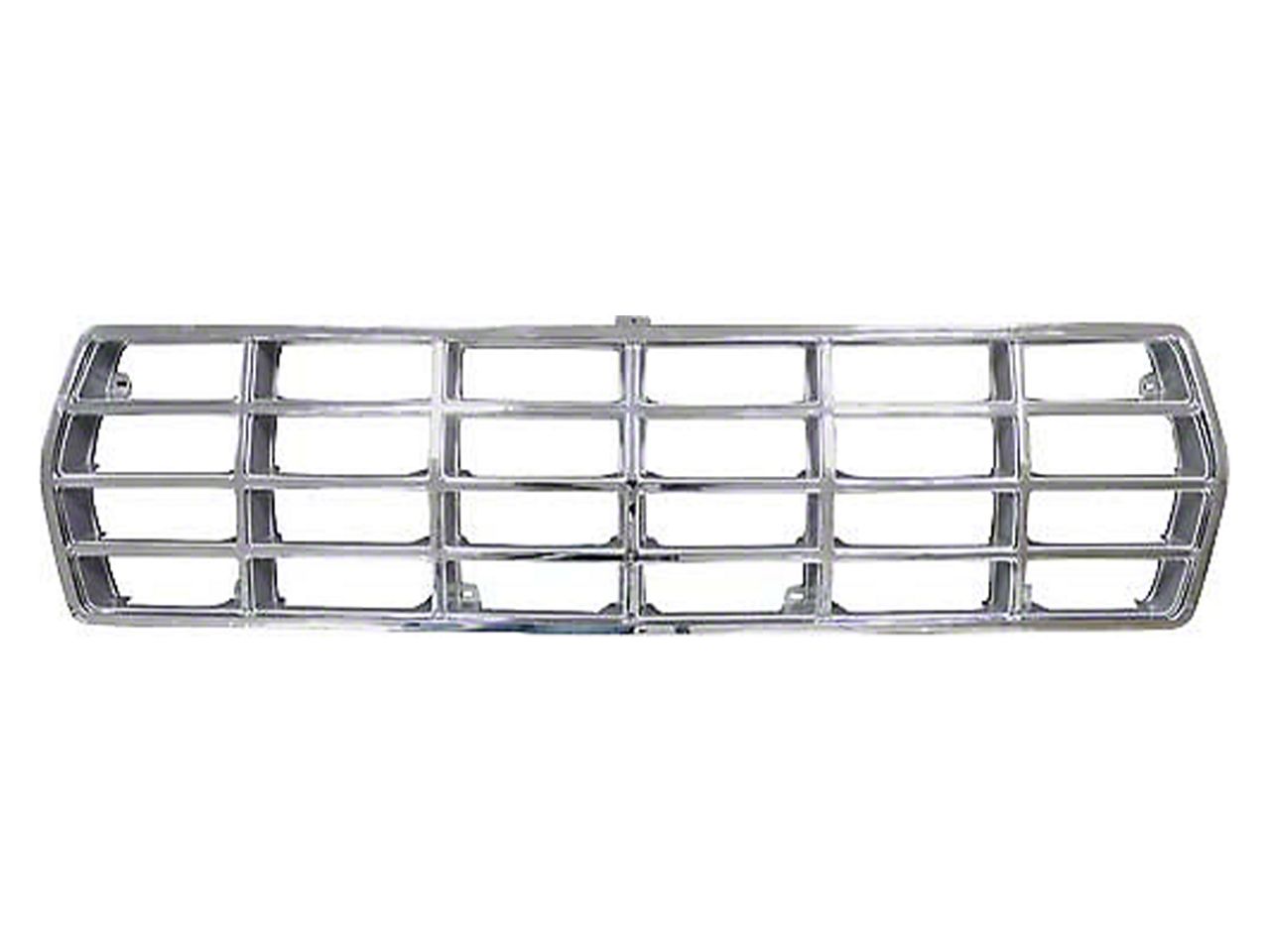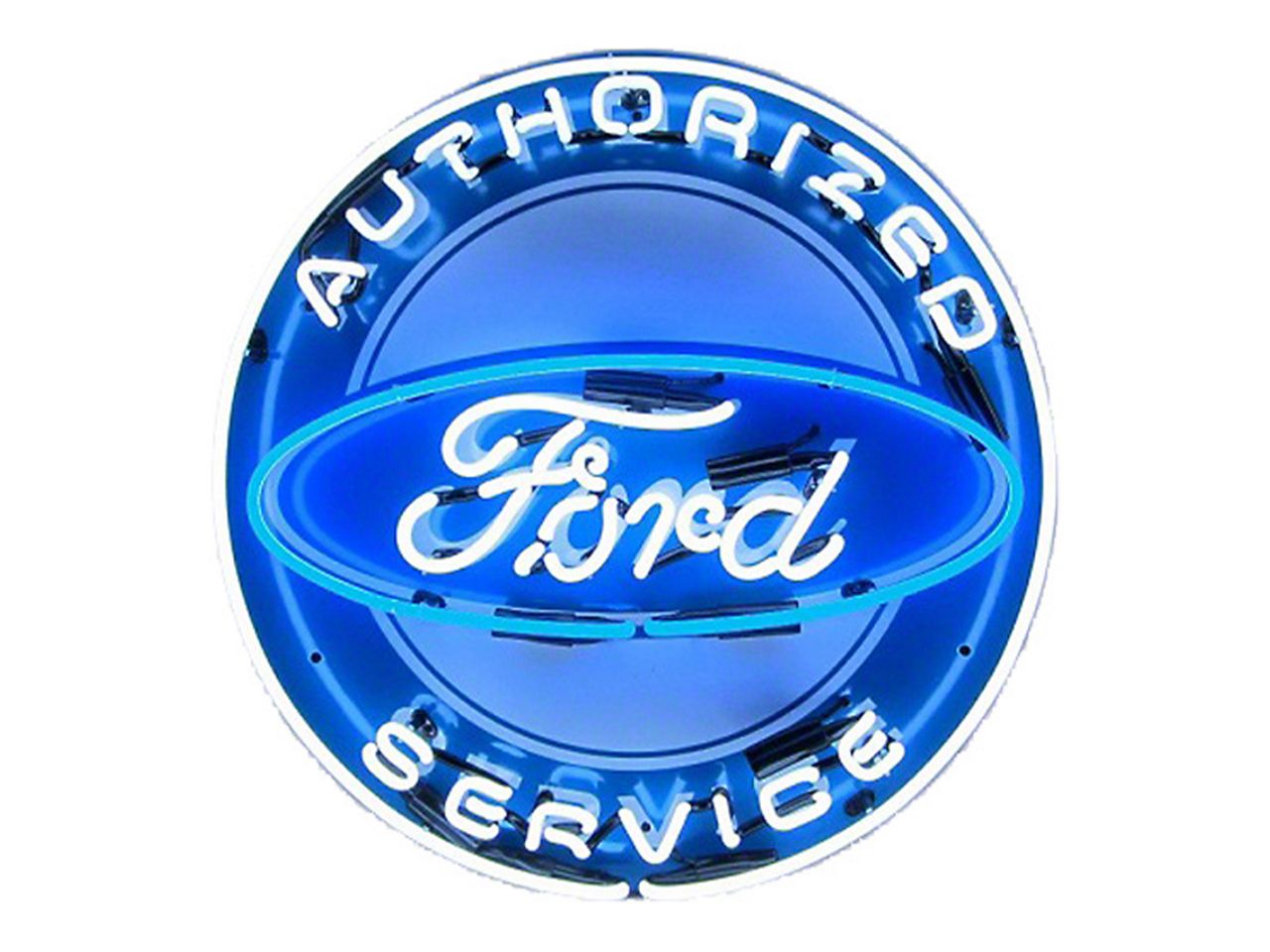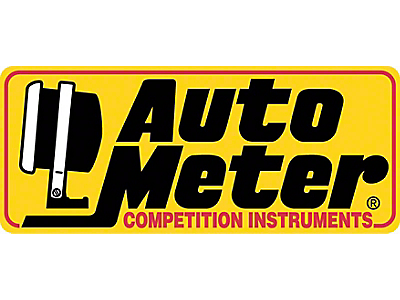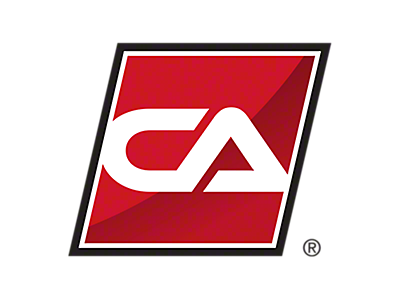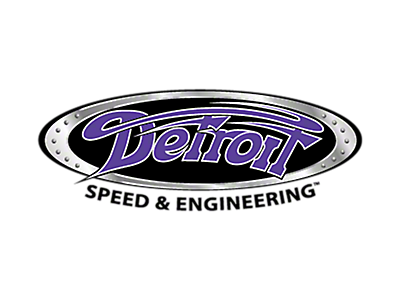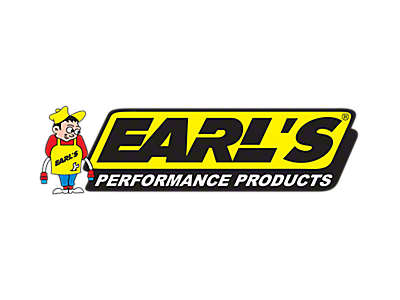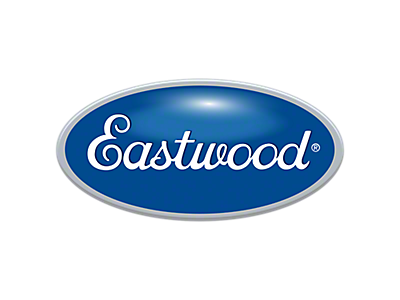Ford Pickup 1932-1997 FORD PICKUP HISTORY One of the most popular collectible vehicles ever produced Although Ford had been producing factory made pickup trucks since 1925, the changes made to the truck line in 1932 would set Ford apart from its competition and establish the auto maker’s reputation as a builder of powerful and sturdy work vehicles. The most significant change in the 1932 truck line occurred under the hood. Facing competition in the pickup truck market from the Chevrolet 6-cylinder engine, Ford decided to take a gamble, and offered their newly designed Ford Flathead V8, originally slated as an option for passenger cars, in their truck line. The decision would prove to be a popular one with the buying public. The 4-cylinder engine was still offered as an economy option, but would eventually be phased out due to low demand. Unlike the Ford passenger cars of the era, the trucks of the 1930s would not receive many radical styling changes. Spartan interiors and a design that focused on functionality over style would be the standard for a line that would see only minor changes for the next few years. The next noteworthy change in appearance occurred in 1935. Styling changes for both the passenger car and truck line found favor with potential buyers, increasing sales for Ford. The trucks borrowed some design cues from their passenger car cousins and featured a slanted-back grille and windshield, tapered headlight housings, and curvaceous, skirted fenders. In 1937, in an effort to reintroduce an economy engine, Ford offered a downsized Flathead V8, down to 136 cubic inches from the standard 221 cubic inches, as an option. The 1938 pickup included a new updated cab and bed, a large oval grille, and generously rounded front and rear fenders. As the decade closed, Ford, coerced by competition and public pressure, introduced hydraulic brakes for the first time in 1939. With the arrival of the 1940s, Ford pickup trucks and passenger cars shared styling traits closer than ever before. In 1940, the pickup truck carried such passenger car cues as a vee-shaped grille and fenders with integral headlights. Interiors were also upgraded, sharing many car features such as two-tone materials, chrome accents, and a dashboard that was more modern and less utilitarian. By 1942, Ford had made a departure from sharing passenger car styling with the truck line but shortly after the new models were introduced, the US entered WWII. The production of civilian vehicles was halted, allowing Ford to retool and concentrate on building a variety of military vehicles, including aircraft engines and bombers. When the production of civilian vehicles resumed in 1946 and into 1947, the design of the pickup remained virtually unchanged from 1942. The death of Ford Motor Company’s founder, Henry Ford, in 1947, brought the end of an era. Under the guidance of his grandson, Henry Ford II, a new direction for Ford trucks would take place, beginning in 1948 with the introduction of the standard setting F-Series. Promoted as a “Bonus Built” truck, the release of the new F-Series line in 1948 was the first new design from Ford since returning to civilian vehicle production after WWII. A number that designated the load capacity of the truck followed the “F” prefix. The F1was rated at ½ ton capacity, the F2 at ¾ ton, and the F3 rated as a 1 ton pickup. The series continued up through F8 for Ford’s heavy-duty trucks. In an effort to gain some ground on the light truck sales leader, Chevrolet, Ford invested a significant amount of resources, both in designers and dollars, toward the creation of their new pickups. Particular attention was given to the one place where the driver spends the most time, the cab. Ford advertised “living room comfort” for a new cab that was taller and more spacious than any Ford had previously released. The wide cab, furnished with a comfortably upholstered coil spring bench seat, had sufficient room for a driver and two passengers. The focus on driver comfort was even extended to the way the cab was mounted upon the frame. Various rubber pads, bushings, and rubber insulated bolts were used in an effort to reduce cab noise and soften the pickup’s ride. The interior of the cab featured more trim items than usual for period pickup trucks including sun visors, an ashtray, and an instrument panel designed with accessibility in mind. The clearly visible gauges were complemented by the expansive view from behind the wheel, as the driver looked over the hood through a wide single-paned windshield. The body of the new F-Series saw its share of restyling as well. The front fenders featured a wraparound appearance, coming together around a five-bar horizontal grille. Headlights were nestled on either side of the grille rather than placed into the front fenders as was previously done. The large triangular hood drew back to the broad windshield and under the hood, the buyer could opt for a 226 CID, 95 HP, 6-cylinder engine or the 239 CID, 100 HP, Flathead V8. A 3-speed floor shift transmission was standard for the F1 and F2 pickups, and the F3 1 ton pickup was offered with a 4-speed transmission as standard. By the end of 1948 it was clear that the effort Ford put into designing the F-Series was worth it. Ford’s sales were hitting record numbers and the company celebrated its best production year for trucks since 1929. Not wanting to tamper with success, Ford changed little in the F-Series design for the next four years. A significant engine change occurred in 1952 with the introduction of the overhead valve, 215CID 6-cylinder engine. Rated at 101 HP, the 6-cylinder was only 5 horses behind the Flathead V8’s 106 HP. The Second Generation F-Series was between 1953 and 1956. In 1953, Ford celebrated its 50th anniversary. The year would see Ford introduce a new generation of F-Series trucks and would be the last year for the venerable Flathead V8. For the next generation of pickup trucks, new number designations, once again relating to load capacity, accompanied the new look. The former F1 was now the F100 ½ ton, with the F250 at ¾ ton, and the F350 rated at 1 ton. New styling for 1953 included a more spacious cab with a wider bench seat and upgraded upholstery. The instrument cluster was grouped into a single unit and all dashboard switches were relocated in an effort to provide easier driver access from behind the wheel. A large, curved front windshield was smartly slanted back in the cab. This not only increased visibility for the driver, but, along with an option for a large rear window, would become a distinctive design element within the F-Series for the next few years. While the engine options remained unchanged from the previous year, the option of an automatic transmission was added for F100 in 1953. Changes to F-Series line would be few from 1953-56. One considerable highlight was the introduction of the overhead valve, “Y-Block” V8. Replacing the Flathead V8 in 1954, Ford’s newest engine, the result of years of development, had the same displacement as the Flathead at 239 CID, but produced 30 more HP. In 1956, the curved windshield was expanded, giving the pickup a wraparound windshield that, when combined with a full wraparound rear window option, brought the F-Series to the apex of pickup design. Under the hood, the “Y-Block” V8, increased to 272CID, was offered. The pickups produced by Ford from 1953-56 were not only popular for their time, but remain to this day some of the most sought after models with restorers and street rodders alike. The Third Generation was between 1957 and 1960. To answer the popular high-styled pickups offered from Chevrolet beginning in 1955, Ford introduced a radically redesigned F-Series pickup for 1957. A clean “slabside" appearance replaced the fat-fendered look and the cab was widened, eliminating the running boards. A flat, full-width hood added to the clean lines of the pickup and provided greater visibility. A choice of pickup beds was offered, the traditional Flareside, with a narrow bed, and the first true full-width Styleside bed with straight-through rear fenders. Improved options for two-tone paint were available as a result of the new design. No longer were just the roof and cab pillars painted white in a two-tone paint job. Now, a crease that ran down the side of the fender and cab became the divider when two-tone paint schemes were applied. Engine options for the 1957 pickup included a 223 CID, 139HP, 6-cylinder and a 272 CID, 171 HP, V8. Like Ford’s passenger car line, the 1958 pickups were easily distinguished from previous model years by the addition of two more headlights. Under the hood, 1958 saw the replacement, in mid-year, of the 272 CID V8 engine with the 186 HP 292 CID V8. 1959 was the first year Ford offered a factory-built four-wheel drive option. Ford had previously only offered a four-wheel drive conversion done by an outside manufacturer such as the Marmon-Harrington Company. Sticking with the success of the previous two years, the 1959 F-Series pickup received only subtle ornamentation changes and a restyled hood. Once again, Ford had a successful model, and the design elements implemented in the 1957 F-Series would influence the modern look of all pickups to follow. The Fourth Generation was produced between 1961 and 1966. 1961 saw the introduction of the controversial integral cab Styleside pickup. A feature of the passenger car based Ford Ranchero since 1957, the integral cab and bed was an untraditional approach for pickup truck. While this innovative design created a great new look for Ford’s pickups, as the box was no longer a separate unit, problems quickly became apparent. When fully loaded, the bed flexed at a different rate than the cab and once rust set in, Ford was forced to acknowledge that the exciting new look of their unibody pickup came with the cost of inherent structural problems. As a result, the design was short-lived. In 1963, Ford reinstated the non-integral cab and box style, and in 1964, abandoned the unibody pickup truck design completely for the F-Series. For 1965, Ford introduced the innovative Twin I-Beam independent front suspension. Offered on two-wheel drive pickups, the new suspension gave a softer ride while at the same time, provided better handling. This year also saw the introduction of two new 6-cylinder engines, the 240 CID and 300 CID, as well as an upgraded 352 CID, 208 HP, V8. In 1963, Ford reinstated the non-integral cab and box style, and in 1964, abandoned the unibody pickup truck design completely for the F-Series. For 1965, Ford introduced the innovative Twin I-Beam independent front suspension. Offered on two-wheel drive pickups, the new suspension gave a softer ride while at the same time, provided better handling. This year also saw the introduction of two new 6-cylinder engines, the 240 CID and 300 CID, as well as an upgraded 352 CID, 208 HP, V8. Ford continued to provide more creature comforts for the 1966 F-Series pickup trucks. A new trim level that included passenger car features such as floor carpeting, bucket seats, and a console was available for the newly created Ranger model. The Fifth Generation of Ford pickup trucks lasted from 1967 through 1972. Ford ignored the trend for softer, more rounded bodylines, producing instead a truck with a crisp, angular look to it. Pickups were available in multiple trim levels, often with bright body, side, and rocker panel mouldings as prominent elements of the packages offered. Throughout this five-year span, the overall design stayed the same and a continued emphasis was placed on offering car-like comfort and convenience, as well as utility. Ford continued to use the Twin-I-Beam front suspension and added two new engines, the 360 CID and 390 CID V8 to the pickup truck line in 1968. In an effort to offer an engine option with fuel economy in mind, Ford made the reliable small block 302 CID, V8 available in 1970. As public demand grew for more comfort and convenience options in pickup trucks, Ford obliged buyers with the Ranger XLT option in 1970, and upped the ante again in 1971 with the Explorer package. By 1972, you could order a pickup truck that had nearly every option that was available for a passenger car. The Sixth Generation would be the one that changed truck history forever. This generation lasted between 1973 and 1979. Significant changes and upgrades were given to the Series that included larger cabins, front disc brakes, a relocated gas tank outside the cab, improved heating and air, and more galvanized steel. Also during this time, the 4-wheel-drive SuperCab made its debut. In 1975, the F-150 was introduced and has since gone on to become the best selling truck ever. Now, that's grounds for bragging rights. In order to avoid certain emission control restrictions back in the day, the F-150 debuted between the F-100 and the F-250 and the rest is history. The Ford Bronco was redesigned into a variation of the F-Series in 1978 and featured a removable camper shell. In 1979, the 460 big block engine in the half ton truck saw its final year. The Seventh Generation occurred between 1980 and 1986. This generation received the first complete redesign since 1965 from the ground, up. Improved aerodynamics and fuel economy and both interior and exterior modifications were made. In 1983, diesel power was added to the F-Series. In 1984, a new high-output version of the 5.8L Windsor was introduced and 1985 saw the first year of electronic fuel injection for the 5.0L V8. In 1988, all other vehicles switched over to electronic fuel injection. In 1983, the F-100 halted production, placing the F-150 as the lightest pickup on the market. In 1986, the F-150 no longer offered "3-on-the-tree" manual shifting. This generation was the first to include upscale amenities such as power windows, power door locks, power mirrors, interval windshield wipers, tinted windshield, locking gas cap, inside locking hood release, and so many other options and standards were available during this new, technologically-charged generation. The Eighth Generation was between 1987 and 1991. In the first year of this generation better aerodynamics included a rounded front clip and softer lines around fender arches and the rear bed and it sported an all new interior. The first 5-speed manual overdrive transmission was introduced in 1987 and 4-speeds were discontinued. In 1989, a C6 3-speed automatic was replaced as a base automatic transmission by an E4OD, 4-speed electronically controlled automatic overdrive unit. In 1987, the F-Series 4.9L inline 6 was converted to fuel injection and in 1988, the Ford F-150 became the first pickup truck that was sold as a non-carbureted engine. In 1989, the F-Series had been established as being the nation's best selling vehicle. The Ninth Generation was between 1992 and 1996 and the F-Series received a new facelift. The FlareSide bed was reintroduced since its retirement in 1987 as an option, and a lower hood line, more advanced aerodynamics, newly designed fenders and grille changes and interior upgrades were notable. This generation marked Ford's 75th anniversary of its 1917 Ford Model TT and Ford offered an anniversary package on its 1992 F-Series that included a 75th Anniversary Special Logo. The 1994 models offered an updated dashboard with the addition of a driver's side airbag in the F-150. Also, a high mount, third brake stop light was included in the new look. New hi-tech options included remote keyless entry with alarm, power driver's seat, and a compact disc player. By 1996, Ford had overtaken combined sales of Chevrolet and GMC for the first time in a decade by reaching the 800,000 mark. References: https://www.blueovaltrucks.com/resources/f-series_history.htm https://money.cnn.com/gallery/autos/2014/01/13/ford-truck-history/7.html https://en.wikipedia.org/wiki/Ford_F-Series https://www.angelakrauseford.com fun facts: It’s A Gas - In 1932, the same year Ford introduced the V8 engine, the first federal gasoline tax, set at 1 cent per gallon, was put into place. Rare Indeed - Near the end of 1944, the War Production Board allowed Ford to resume a limited production run of heavy-duty trucks for civilian use. A prospective buyer had to present proof that their business was vital to the war effort in order to obtain a new vehicle. No Spare - When civilian production resumed in 1946, many trucks were delivered without a mounted spare tire, due to a continued shortage in rubber supplies. One Man’s Trash - Making a regular appearance on the hit comedy television series, Sanford and Son, a rusted and faded red 1951 Ford F1 pickup was the unsung third partner of the business advertised on its door: SANFORD AND SON SALVAGE 2ND HAND ANTIQUES WE BUY & SELL JUNK Another Man’s Treasure - When Ford released the new F-Series in 1948, it was advertised as having a “New Million Dollar Truck Cab.” More than a marketing strategy used to emphasize the comfort level of the cab, it was rumored that “million” reflected the cost Ford spent researching, designing, and developing their new pickup cab. One Giant Leap - When Bob Chandler modified his F250 4x4 in the mid-1970s, equipping the truck with front and rear steering, heavy-duty axles, and tall tires, it’s unlikely he could have predicted what the future held for the “monster” he had created. Perhaps the world’s most recognizable Ford truck, “Bigfoot” is regarded not only as the first “monster truck,” but also the truck responsible for inspiring a racing series that continues to this day. Best Seller - In 1989, the F-Series had been established as being the nation's best selling vehicle. Next Level - By 1996, Ford Pickups had overtaken combined sales of Chevrolet and GMC Pickups for the first time in a decade by reaching the 800,000 mark. One of the most popular collectible vehicles ever produced Although Ford had been producing factory made pickup trucks since 1925, the changes made to the truck line in 1932 would set Ford apart from its competition and establish the auto maker’s reputation as a builder of powerful and sturdy work vehicles. The most significant change in the 1932 truck line occurred under the hood. Facing competition in the pickup truck market from the Chevrolet 6-cylinder engine, Ford decided to take a gamble, and offered their newly designed Ford Flathead V8, originally slated as an option for passenger cars, in their truck line. The decision would prove to be a popular one with the buying public. The 4-cylinder engine was still offered as an economy option, but would eventually be phased out due to low demand. Unlike the Ford passenger cars of the era, the trucks of the 1930s would not receive many radical styling changes. Spartan interiors and a design that focused on functionality over style would be the standard for a line that would see only minor changes for the next few years. The next noteworthy change in appearance occurred in 1935. Styling changes for both the passenger car and truck line found favor with potential buyers, increasing sales for Ford. The trucks borrowed some design cues from their passenger car cousins and featured a slanted-back grille and windshield, tapered headlight housings, and curvaceous, skirted fenders. In 1937, in an effort to reintroduce an economy engine, Ford offered a downsized Flathead V8, down to 136 cubic inches from the standard 221 cubic inches, as an option. The 1938 pickup included a new updated cab and bed, a large oval grille, and generously rounded front and rear fenders. As the decade closed, Ford, coerced by competition and public pressure, introduced hydraulic brakes for the first time in 1939. With the arrival of the 1940s, Ford pickup trucks and passenger cars shared styling traits closer than ever before. In 1940, the pickup truck carried such passenger car cues as a vee-shaped grille and fenders with integral headlights. Interiors were also upgraded, sharing many car features such as two-tone materials, chrome accents, and a dashboard that was more modern and less utilitarian. By 1942, Ford had made a departure from sharing passenger car styling with the truck line but shortly after the new models were introduced, the US entered WWII. The production of civilian vehicles was halted, allowing Ford to retool and concentrate on building a variety of military vehicles, including aircraft engines and bombers. When the production of civilian vehicles resumed in 1946 and into 1947, the design of the pickup remained virtually unchanged from 1942. The death of Ford Motor Company’s founder, Henry Ford, in 1947, brought the end of an era. Under the guidance of his grandson, Henry Ford II, a new direction for Ford trucks would take place, beginning in 1948 with the introduction of the standard setting F-Series. Promoted as a “Bonus Built” truck, the release of the new F-Series line in 1948 was the first new design from Ford since returning to civilian vehicle production after WWII. A number that designated the load capacity of the truck followed the “F” prefix. The F1was rated at ½ ton capacity, the F2 at ¾ ton, and the F3 rated as a 1 ton pickup. The series continued up through F8 for Ford’s heavy-duty trucks. In an effort to gain some ground on the light truck sales leader, Chevrolet, Ford invested a significant amount of resources, both in designers and dollars, toward the creation of their new pickups. Particular attention was given to the one place where the driver spends the most time, the cab. Ford advertised “living room comfort” for a new cab that was taller and more spacious than any Ford had previously released. The wide cab, furnished with a comfortably upholstered coil spring bench seat, had sufficient room for a driver and two passengers. The focus on driver comfort was even extended to the way the cab was mounted upon the frame. Various rubber pads, bushings, and rubber insulated bolts were used in an effort to reduce cab noise and soften the pickup’s ride. The interior of the cab featured more trim items than usual for period pickup trucks including sun visors, an ashtray, and an instrument panel designed with accessibility in mind. The clearly visible gauges were complemented by the expansive view from behind the wheel, as the driver looked over the hood through a wide single-paned windshield. The body of the new F-Series saw its share of restyling as well. The front fenders featured a wraparound appearance, coming together around a five-bar horizontal grille. Headlights were nestled on either side of the grille rather than placed into the front fenders as was previously done. The large triangular hood drew back to the broad windshield and under the hood, the buyer could opt for a 226 CID, 95 HP, 6-cylinder engine or the 239 CID, 100 HP, Flathead V8. A 3-speed floor shift transmission was standard for the F1 and F2 pickups, and the F3 1 ton pickup was offered with a 4-speed transmission as standard. By the end of 1948 it was clear that the effort Ford put into designing the F-Series was worth it. Ford’s sales were hitting record numbers and the company celebrated its best production year for trucks since 1929. Not wanting to tamper with success, Ford changed little in the F-Series design for the next four years. A significant engine change occurred in 1952 with the introduction of the overhead valve, 215CID 6-cylinder engine. Rated at 101 HP, the 6-cylinder was only 5 horses behind the Flathead V8’s 106 HP. The Second Generation F-Series was between 1953 and 1956. In 1953, Ford celebrated its 50th anniversary. The year would see Ford introduce a new generation of F-Series trucks and would be the last year for the venerable Flathead V8. For the next generation of pickup trucks, new number designations, once again relating to load capacity, accompanied the new look. The former F1 was now the F100 ½ ton, with the F250 at ¾ ton, and the F350 rated at 1 ton. New styling for 1953 included a more spacious cab with a wider bench seat and upgraded upholstery. The instrument cluster was grouped into a single unit and all dashboard switches were relocated in an effort to provide easier driver access from behind the wheel. A large, curved front windshield was smartly slanted back in the cab. This not only increased visibility for the driver, but, along with an option for a large rear window, would become a distinctive design element within the F-Series for the next few years. While the engine options remained unchanged from the previous year, the option of an automatic transmission was added for F100 in 1953. Changes to F-Series line would be few from 1953-56. One considerable highlight was the introduction of the overhead valve, “Y-Block” V8. Replacing the Flathead V8 in 1954, Ford’s newest engine, the result of years of development, had the same displacement as the Flathead at 239 CID, but produced 30 more HP. In 1956, the curved windshield was expanded, giving the pickup a wraparound windshield that, when combined with a full wraparound rear window option, brought the F-Series to the apex of pickup design. Under the hood, the “Y-Block” V8, increased to 272CID, was offered. The pickups produced by Ford from 1953-56 were not only popular for their time, but remain to this day some of the most sought after models with restorers and street rodders alike. The Third Generation was between 1957 and 1960. To answer the popular high-styled pickups offered from Chevrolet beginning in 1955, Ford introduced a radically redesigned F-Series pickup for 1957. A clean “slabside" appearance replaced the fat-fendered look and the cab was widened, eliminating the running boards. A flat, full-width hood added to the clean lines of the pickup and provided greater visibility. A choice of pickup beds was offered, the traditional Flareside, with a narrow bed, and the first true full-width Styleside bed with straight-through rear fenders. Improved options for two-tone paint were available as a result of the new design. No longer were just the roof and cab pillars painted white in a two-tone paint job. Now, a crease that ran down the side of the fender and cab became the divider when two-tone paint schemes were applied. Engine options for the 1957 pickup included a 223 CID, 139HP, 6-cylinder and a 272 CID, 171 HP, V8. Like Ford’s passenger car line, the 1958 pickups were easily distinguished from previous model years by the addition of two more headlights. Under the hood, 1958 saw the replacement, in mid-year, of the 272 CID V8 engine with the 186 HP 292 CID V8. 1959 was the first year Ford offered a factory-built four-wheel drive option. Ford had previously only offered a four-wheel drive conversion done by an outside manufacturer such as the Marmon-Harrington Company. Sticking with the success of the previous two years, the 1959 F-Series pickup received only subtle ornamentation changes and a restyled hood. Once again, Ford had a successful model, and the design elements implemented in the 1957 F-Series would influence the modern look of all pickups to follow. The Fourth Generation was produced between 1961 and 1966. 1961 saw the introduction of the controversial integral cab Styleside pickup. A feature of the passenger car based Ford Ranchero since 1957, the integral cab and bed was an untraditional approach for pickup truck. While this innovative design created a great new look for Ford’s pickups, as the box was no longer a separate unit, problems quickly became apparent. When fully loaded, the bed flexed at a different rate than the cab and once rust set in, Ford was forced to acknowledge that the exciting new look of their unibody pickup came with the cost of inherent structural problems. As a result, the design was short-lived. In 1963, Ford reinstated the non-integral cab and box style, and in 1964, abandoned the unibody pickup truck design completely for the F-Series. For 1965, Ford introduced the innovative Twin I-Beam independent front suspension. Offered on two-wheel drive pickups, the new suspension gave a softer ride while at the same time, provided better handling. This year also saw the introduction of two new 6-cylinder engines, the 240 CID and 300 CID, as well as an upgraded 352 CID, 208 HP, V8. In 1963, Ford reinstated the non-integral cab and box style, and in 1964, abandoned the unibody pickup truck design completely for the F-Series. For 1965, Ford introduced the innovative Twin I-Beam independent front suspension. Offered on two-wheel drive pickups, the new suspension gave a softer ride while at the same time, provided better handling. This year also saw the introduction of two new 6-cylinder engines, the 240 CID and 300 CID, as well as an upgraded 352 CID, 208 HP, V8. Ford continued to provide more creature comforts for the 1966 F-Series pickup trucks. A new trim level that included passenger car features such as floor carpeting, bucket seats, and a console was available for the newly created Ranger model. The Fifth Generation of Ford pickup trucks lasted from 1967 through 1972. Ford ignored the trend for softer, more rounded bodylines, producing instead a truck with a crisp, angular look to it. Pickups were available in multiple trim levels, often with bright body, side, and rocker panel mouldings as prominent elements of the packages offered. Throughout this five-year span, the overall design stayed the same and a continued emphasis was placed on offering car-like comfort and convenience, as well as utility. Ford continued to use the Twin-I-Beam front suspension and added two new engines, the 360 CID and 390 CID V8 to the pickup truck line in 1968. In an effort to offer an engine option with fuel economy in mind, Ford made the reliable small block 302 CID, V8 available in 1970. As public demand grew for more comfort and convenience options in pickup trucks, Ford obliged buyers with the Ranger XLT option in 1970, and upped the ante again in 1971 with the Explorer package. By 1972, you could order a pickup truck that had nearly every option that was available for a passenger car. The Sixth Generation would be the one that changed truck history forever. This generation lasted between 1973 and 1979. Significant changes and upgrades were given to the Series that included larger cabins, front disc brakes, a relocated gas tank outside the cab, improved heating and air, and more galvanized steel. Also during this time, the 4-wheel-drive SuperCab made its debut. In 1975, the F-150 was introduced and has since gone on to become the best selling truck ever. Now, that's grounds for bragging rights. In order to avoid certain emission control restrictions back in the day, the F-150 debuted between the F-100 and the F-250 and the rest is history. The Ford Bronco was redesigned into a variation of the F-Series in 1978 and featured a removable camper shell. In 1979, the 460 big block engine in the half ton truck saw its final year. The Seventh Generation occurred between 1980 and 1986. This generation received the first complete redesign since 1965 from the ground, up. Improved aerodynamics and fuel economy and both interior and exterior modifications were made. In 1983, diesel power was added to the F-Series. In 1984, a new high-output version of the 5.8L Windsor was introduced and 1985 saw the first year of electronic fuel injection for the 5.0L V8. In 1988, all other vehicles switched over to electronic fuel injection. In 1983, the F-100 halted production, placing the F-150 as the lightest pickup on the market. In 1986, the F-150 no longer offered "3-on-the-tree" manual shifting. This generation was the first to include upscale amenities such as power windows, power door locks, power mirrors, interval windshield wipers, tinted windshield, locking gas cap, inside locking hood release, and so many other options and standards were available during this new, technologically-charged generation. The Eighth Generation was between 1987 and 1991. In the first year of this generation better aerodynamics included a rounded front clip and softer lines around fender arches and the rear bed and it sported an all new interior. The first 5-speed manual overdrive transmission was introduced in 1987 and 4-speeds were discontinued. In 1989, a C6 3-speed automatic was replaced as a base automatic transmission by an E4OD, 4-speed electronically controlled automatic overdrive unit. In 1987, the F-Series 4.9L inline 6 was converted to fuel injection and in 1988, the Ford F-150 became the first pickup truck that was sold as a non-carbureted engine. In 1989, the F-Series had been established as being the nation's best selling vehicle. The Ninth Generation was between 1992 a
Eckler's Catalogs Available Now!
Talk to a Mustang Sales Tech
1-610-990-4558
M-F 8:30A-11P ET, Sat-Sun 8:30A-9P ET
